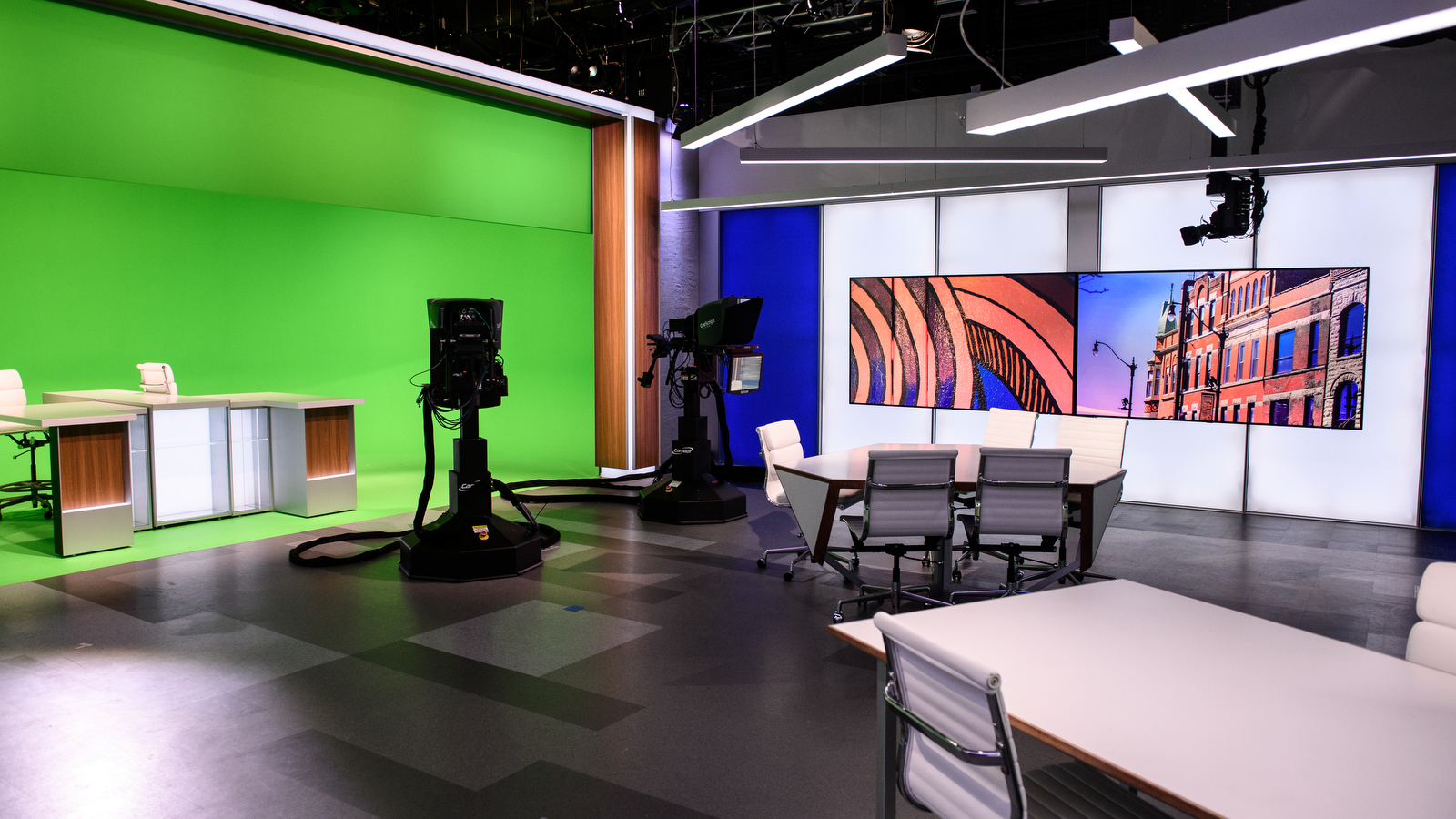Chicago PBS station overhauls news program, production technology

Subscribe to NCS for the latest news, project case studies and product announcements in broadcast technology, creative design and engineering delivered to your inbox.
WTTW, the PBS member station in Chicago, has invested in a complete overhaul of its local news programming.
“Chicago Tonight,” the nightly news program hosted by Brandis Friedman and Paris Schutz, will debut the updates on Monday, Oct. 3, 2022, with additional shows utilizing the studio.
The changes impact both the show’s visual design and overall production and include a new set, motion graphics package and music package along with a new production control room and audio suite.
“We are excited to debut this new and immersive viewing experience, which will enhance our news coverage and advance our mission to provide independent, trusted journalism that is inclusive and reflective of the diversity of Chicago and the region,” said Sandra Cordova Micek, WTTW’s president and CEO.
Working with Eric Siegel and George Allison – who designed the current set of “PBS NewsHour” – the new home of “Chicago Tonight” blends physical scenery with virtual elements.
“It’s an interesting project because normally with virtual sets, you have a little area of furniture and then everything surrounding that central area is virtual,” said Siegel.
“We’re trying to keep it stylish, but trying to make it make sense,” noted Siegel about the design direction. “Conversation’s a big thing with WTTW. So, we wanted to make sure that people were concentrating on the conversation as opposed to concentrating on some whiz-bang thing that we thought was super cool in the background.”
Originally thinking about a full virtual set, WTTW ultimately opted for a hybrid approach to ensure redundancy and flexibility.
“The key is giving the viewers enough clues that it’s a real space to make it not distracting,” said Siegel.


“Our goal was to have the virtual areas match as closely as you could match them to the physical. … We think it’s going to be a very convincing experience,” said Siegel.
Both ends of the studio space include large chromakey cycs allowing the set’s seated positions to take advantage of the virtual extensions, which are powered by Ross Video’s Voyager with rendering from the Unreal Engine. These areas also provide a blank canvas for future programming and specials.
Redundancy is added via multiple large format 98-inch displays which can be used as backgrounds, for live remotes and for on set branding along with smaller 50-inch monitors.
Special consideration was also placed on limiting spillage from the studio’s large chromakey cycs with flooring and furniture materiality selected to reduce reflections.
“Now the challenge is can you make the virtual look real? Can you make it integrated? Can you create a convincing illusion?” asked Siegel. “Taking people into fantastic environments to me is not the challenge anymore. It’s where virtual scenery can be made as convincing as real scenery. That I think is the real challenge.”
“The key is giving the viewer mental cues that allow the viewer to suspend their disbelief,” said Siegel, noting these cues include selecting the right F-stop and lensing for cameras.

Ross Video provided an end-to-end solution for WTTW, including cameras, camera tracking and control room technology, with the company’s creative services team, Rocket Surgery, handling virtual integration from the set’s original Cinema 4D model.
In studio, four Ross CamBots are present along with a Furio SkyDolly ceiling-mounted camera. On the control room side, five Ross Ultrachrome multi-channel keyers are used with the virtual system alongside a Ross Acuity production switcher.
WTTW’s internal team worked with Troika on the new motion graphics and branding for the programming.
Project Credits
- Design by Eric Siegel and George Allison
- Virtual integration by Rocket Surgery
- Fabrication by Chicago Scenic Studios
- Technology integration by WTTW and Ross Video
- Lighting design by WTTW
Photos courtesy of Liz Farina Markel/WTTW.
Subscribe to NCS for the latest news, project case studies and product announcements in broadcast technology, creative design and engineering delivered to your inbox.





tags
Chicago, chicago scenic studios, Chicago Tonight, Epic Games Unreal Engine, Eric Siegel, george allison, George Allison Design, PBS, Rocket Surgery, Ross Acuity, Ross Acuity Production Switcher, Ross CamBot, Ross Video, Ross Video Furio SkyDolly, Ross Voyager, Ross Voyager XR, Troika, virtual, WTTW
categories
Broadcast Facility, Broadcast Facility Technology, Broadcast Industry News, Heroes, Set Design, Virtual Sets